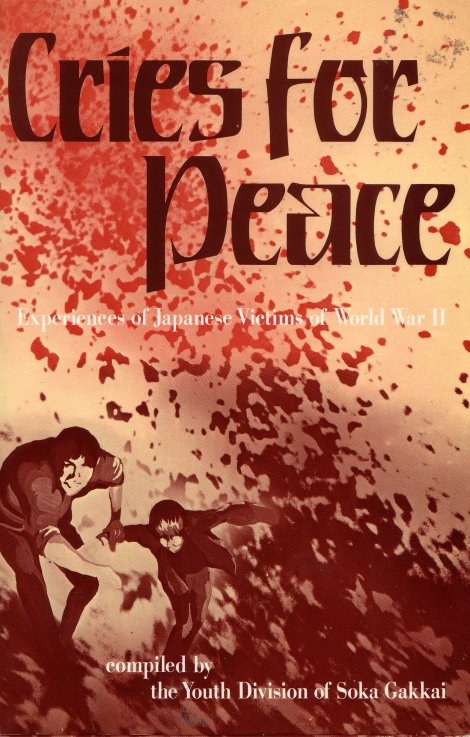
Cries for Peace

This is not the average book you might get from the library. For one thing, its compiled by the Youth Division of Soka Gakkai and is an English version of some entries from a fifty volume set of accounts of Japanese wartime suffering. It's published by The Japan Times, and it is absolutely, definitely not for the faint-of-heart. This is civilian suffering in its absolutely darkest, bloodiest, nastiest form.
There are numerous short sections, and I will highlight only a few of those. The book also agrees with things I've read in other books in relation to just how terrified the civilians were of American forces. They had been fed a diet of Japanese propaganda which convinced them that the US would treat them horribly, which led large numbers of them to choose death by suicide rather than to turn themselves over to US forces.
This is also NOT a book for faint-hearted readers. It's VERY graphic and very, very intense. Be warned.
Eight out of Twenty-Five: Rumors of the landing of American troops results in people taking refuge in a cave deciding to commit suicide. They thought they were going to be killed by the Americans. A hand-grenade was used, and 17 of 25 people were killed.
Sinking of the Tsushima-maru: A ship carrying school children and others is sunk by a US submarine while trying to evacuate from Okinawa.
No matter what happens, live! :On an island west of Okinawa, a village headman says that the Americans “will gouge out our eyes and cut off our noses.” Therefore, the civilians chose suicide.
Lost years of youth: Also on Okinawa. “The Japanese soldiers often forced Okinawans from shelters into the open, where they were gunned down by the enemy. Japanese officers turned their swords on Okinawans who would not leave shelters without an argument.” One woman is killed for having a leaflet dropped from a US plane, urging surrender.
Demoralized Military: Examples of the brutality of Japanese soldiers towards civilians as people who have evacuated to a cave are forced out by soldiers and beaten when they don't move fast enough. Various stories tell of food stores the people had saved up being taken by the soldiers. This story, and others, tells of young men and women being taken by the soldiers and put to work moving ammunition and other things. It also tells of rapes carried out by American soldiers.
The Lily Corps: Girls of high-school age on Okinawa are drafted into the military and serve as nurses in field hospitals. Sometimes they end up getting shot at by American forces while doing various errands (they were in military clothes.) Badly wounded soldiers that had to be left behind when the hospital was moved were given potassium cyanide so they would die that way rather than be captured. Americans killed many of the girls in the hospitals with flame throwers (I assume they thought the hospital was a fortified position or something.)
The woman in that section states that they way they were indoctrinated with the militaristic thinking of the Japanese educational system of the time was why they thought the way they did, cooperated with the Japanese military, and were terrified of the Americans.
Schoolboys to the front: Students in a middle school on Okinawa are put into the Japanese military (the Blood and Iron Royalist Unit). They run from 13 to 17 years of age. Only the fourth-year students are given guns at first, and those are old ones . Some first and second-year students became kamikazes by tying bombs to themselves and rushing American tanks. Of 400 in the group at first, only 7 were left at the end, the rest killed by gunfire from the Americans, sometimes gunfire from the Japanese, etc.
At this point I'm going to stop doing chapter summaries since the events are basically just variations on a theme. The main concepts are:
1. The Japanese military routinely made students join the army, even young ones.
2. The Japanese soldiers routinely practiced cruelty towards Okinawan civilians.
3. Most people accepted working for the military due to the indoctrination they had received in schools or otherwise in the years preceding the war.
4. The indoctrination program was so effective with civilians that many chose suicide rather than surrender to American forces, thinking they would be treated terribly by the Americans.
Main Index
Japan main page
Japanese-American Internment Camps index page
Japan and World War II index page
|